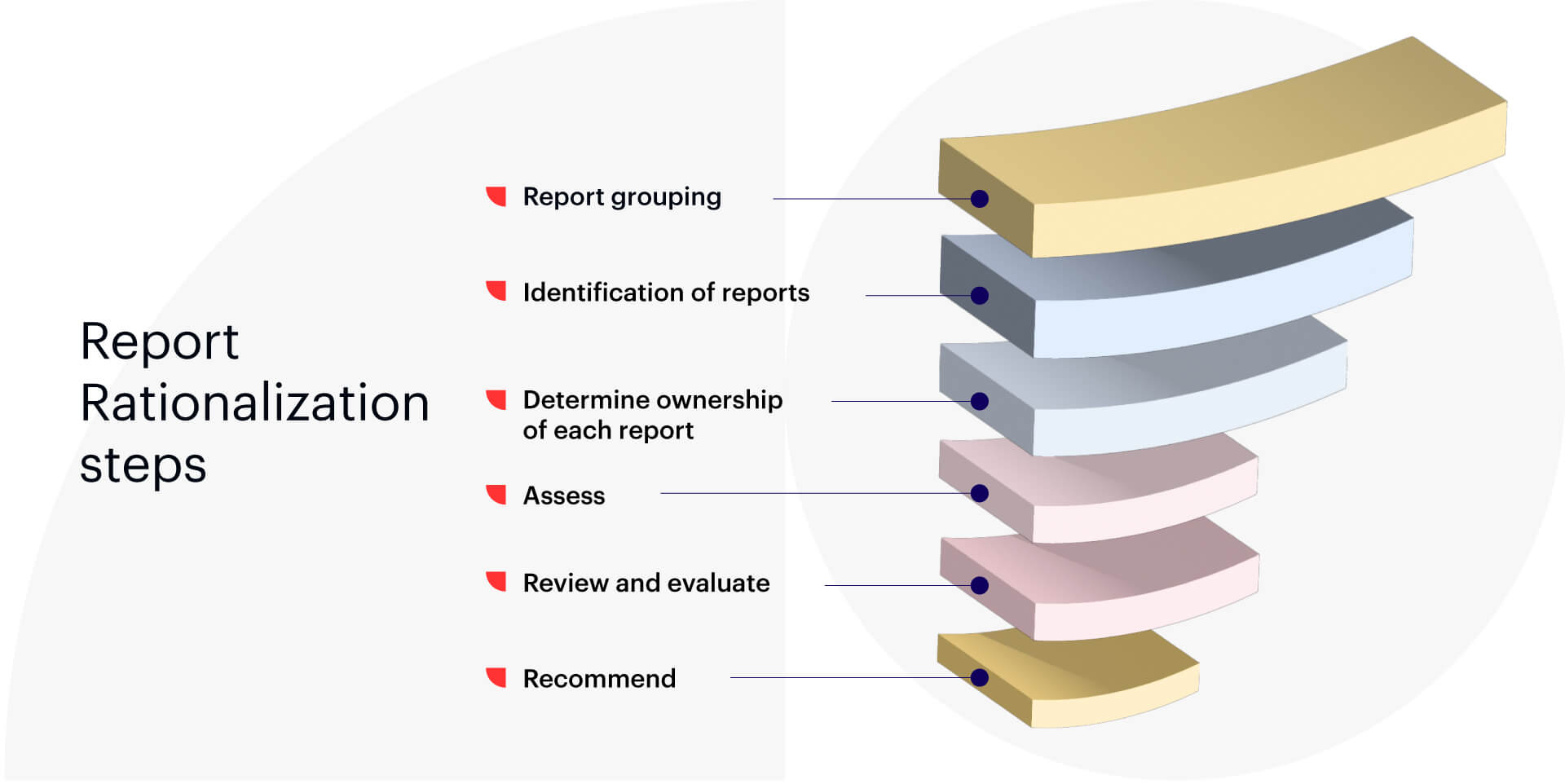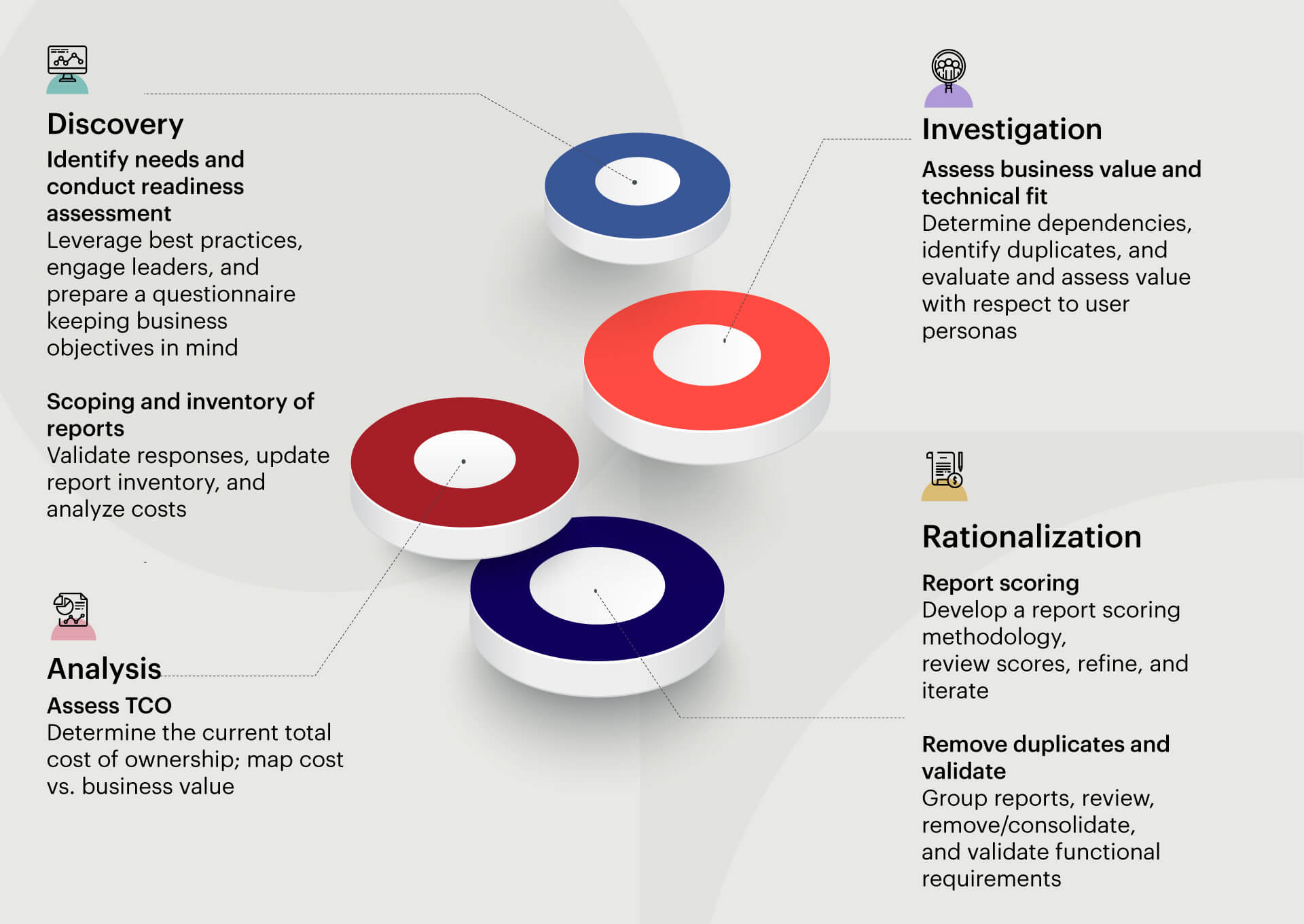
Bring Clear Focus to Actionable Business Intelligence through Report Rationalization
Read time: 3-4 mins
“The more you have, the more you are occupied. The less you have, the more free you are.” – Mother Teresa
The above is true for life, but it applies equally to enterprises and the numerous reports they generate and consume. More often than not, organizations have significantly more reports than necessary, and that impacts productivity. Users invariably get caught in the plethora of reports that claim to provide helpful information but instead end up defeating their core purpose, i.e., providing the right information at the right time to make the right decisions.
Why Report Rationalization?
There is no question that organizations need to move away from massive volumes of reports to an insight-driven culture. That said, a lack of appropriate governance is the leading cause of information duplication and redundancy. Many organizations own various BI technologies with overlapping capabilities that result in increased maintenance, reduced efficiency, lower adoption by business users, and higher cost of ownership.
Given the data explosion today, organizations are trying to mend multiple data sources to understand customer and employee behavior, product choices, supply chain issues, and logistics challenges. This necessitates the modernization of the data and reporting landscape. However, it’s important not to carry the technical debt of duplicate reports.
Hence, there is an urgent need to rationalize the existing reporting landscape.
What does Report Rationalization mean?
Report Rationalization empowers enterprises to identify duplicate reports and understand gaps in the existing reporting landscape. It has to consider both the technical and functional assessment of current reports and various BI technologies in use to determine a holistic future approach for the organization.

Figure 1: Report Rationalization steps
How to rationalize your reports successfully?
Organizations should follow a structured approach toward report rationalization. The framework must consider manual assessment to identify gaps in the existing reporting landscape and automation to compare thousands of reports via metadata to determine any overlap in report definition and usage. The below diagram represents critical aspects to consider during the report rationalization process and activities/steps that are followed.

Figure 2: Report Rationalization phases
The framework includes critical phases such as discovery, investigation, analysis, and rationalization.
Discovery: This phase includes vital steps such as conducting workshops with business stakeholders for reports segregation from analytics, transactional, and operational perspectives. The discovery phase also involves bucketing reports as per business functions, identifying individual reports for analysis, understanding the usage pattern, critical reports for each business function, and any additional KPI requirements not captured in existing reports. To maximize impact of report rationalization, it is essential to extend the discovery phase to include important KPIs and terminologies used by users.
Investigation: The investigation phase includes analyzing reports for their business logic, KPI/metrics information and formulas, extracting logic for KPIs and calculated fields, and analyzing the business context for reports. It further analyzes data attributes required to build these KPIs and metrics.
Analysis: This phase includes listing all KPIs and metrics required for each report so that analysis can be performed on data attributes and underlying tables/databases for these attributes if needed.
Rationalization: This phase consolidates multiple reports into a few based on functionality, KPIs or Metrics covered, and data attributes.
Benefits of Report Rationalization
- Improves decision-making abilities
- Amplifies business user experience
- Enhances processes and standards
- Institutes stronger governance
- Reduces the total cost of ownership (TCO)
Report Rationalization – a continuous journey
The report rationalization exercise is not a one-time activity though it helps substantially reduce technical debt and reporting inventory. It is in the organization’s best interest to undertake the activity regularly and supplement it with a tight report governance model set up, keeping the long-term vision and business goals in mind. The report governance model ensures that new reports are created by the central team only when needed. It creates a separate process and structure for ad hoc analysis and user reports, eventually avoiding frequent report creations which results into massive report rationalization initiatives repeatedly.



